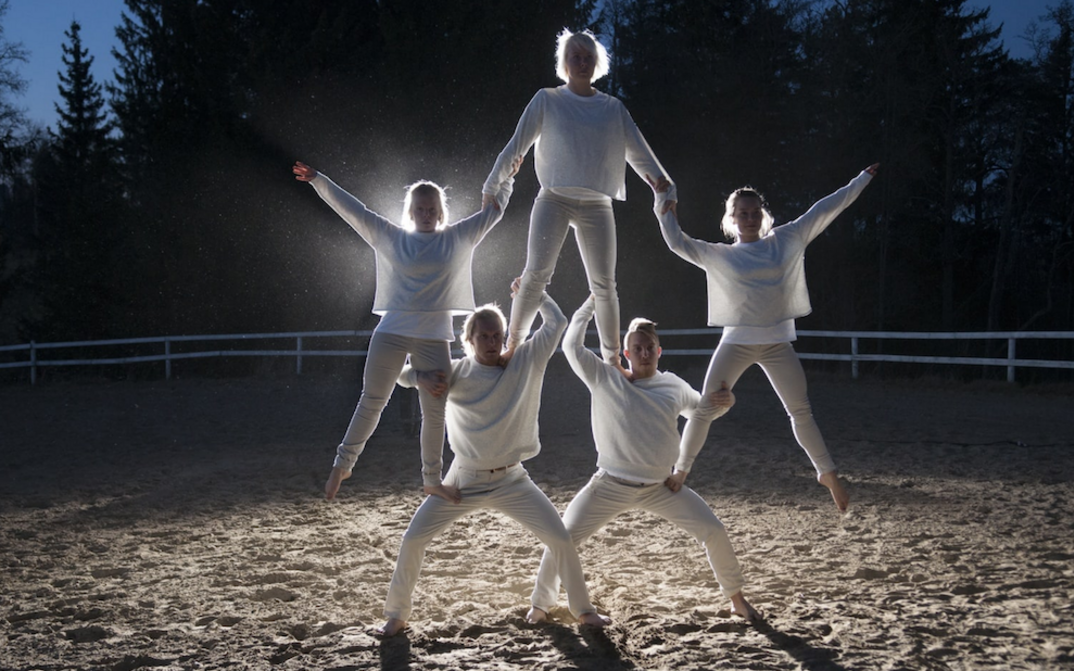Cinema Can Do Cinema Hopping – Behind the Screen

Fri 06.12.
18:00
Films
Projection Instructions (Morgan Fisher, USA 1976, 16 mm, engl. OF, 4 Min.)
Spell Reel (Filipa César, D/Portugal/F/Guinea-Bissau 2017, DCP, OmeU, 97 Min.)
Rainbows Gravity (Mareike Bernien, Kerstin Schroedinger, UK/D 2014, DCP, OmeU, 33 Min.)
Monocle Blink (Franz Wanner, Babylonia Constantinides, D 2012, Digital file, OmeU, 7 Min.)
Picture and Sound Rushes (Morgan Fisher, USA 1973, 16 mm, 11 Min.)
Behind the screen (Charles Chaplin, USA 1916, 16 mm, 28 Min.)
Studies on the Ecology of Drama (Eija-Liisa Ahtila, Finnland 2014, DCP, OmeU, 26 Min.)
13 Ways of Looking at a Blackbird (Ana Vaz, Portugal 2020, DCP, OmeU, 31 Min.)
Film (Alan Schneider, Drehbuch: Samuel Beckett, USA 1965, 35 mm, engl. OF, 24 Min.)
The Camera: Je or La Camera: I (Babette Mangolte, USA 1977, DCP, OF, 90 Min.)
Cinema
Arsenal 2
zu dem KalenderCurated and presented by Clemens von Wedemeyer
Was would it be like if one could tear down the walls of a multiplex and wander back and forth between the films? Two antagonistic, yet complementary programs running in parallel with the audience moving between the auditoria with just one ticket. Secretly leaving the auditorium thus becomes part of a silent performance. The program by is inspired by two Charlie Chaplin films from the Arsenal archive.
Program Cinema 2:
The films of this program are created in how cinema itself is created. They show what happens behind the screen when cinema is prepared and processed. What happens in the gap between writers and viewers? In the “cinema machine”, people doubt, consider, reject. We show who is looking and in what way and which diversions cinema takes in order to create an image. It is a school of seeing which reveals both the desire for images as well as the need not to be shown. Photography and film are marked by the interplay between the operator and the subject of the image. This program shines a light on the relationships between the different forces that play a role in realizing a plot. Some films destroy language, images and archives in order to radically question the structures that produce them.
Projection Instruction
The film consists of texts that formulate instructions for the projectionist, with the interaction between the visible score and the hidden actor at the heart of the performance.
Spell Reel
An essayistic documentary that reedits archive material of Guinea-Bissau’s struggle for independence against Portuguese colonial rule. Spell Reel documents the work of an archive in producing the present when the film material in the cinema travels to where the films were made and is discussed there.
Rainbows Gravity
An investigation of the Agfa Color Neu Film produced in Nazi Germany and the ideological residues contained within color – the idea is to deconstruct the film itself as well as historical ways of seeing and make the invisible elements of color visible.
Monocle Blink
In Monocle Blink, sequences from films by and with Fritz Lang have their images stripped from them and edited together based on sound. The resultant verbal narration revolves around the question of the extent to which the medium of film creates clarity on the basis of illusion.
Picture and Sound Rushes
This polemic film depicts sound as the central prerequisite for sound film, judges silent and asynchronous films, emphasizes the necessity of the clapperboard and has both the cinematographer and sound technician appear as actors.
Behind the screen
The chaotic events on a film set from the perspective of an overwhelmed director. Through slapstick sequences and satirical movements, Chaplin illustrates the challenges and mishaps behind the scenes of a film production.
Studies on the Ecology of Drama
How to narrate in a non-anthropocentric way? With innovative cinematic techniques, Ahtila illuminates the emotional and ecological dimensions of dramatic situations.
13 Ways of Looking at a Blackbird
Created as part of the “Unschool” project, the film is a kaleidoscope of the experiences of high school children who spent a year thinking about cinema with Ana Vaz. With the camera as a tool, they investigate an unfolding ecology of the senses based on the concept of “unlearning”.
Film
The camera, the person observed (Buster Keaton) and living and non-living things all play a game of perception in which being means the same as being perceived.
The Camera: Je or La Camera: I
The film examines the relationships between seeing and the power of image production by showing the relationship between the photographer and the models being photographed. Our role as viewers is also challenged, as the sense that we too must appear before the camera is created.